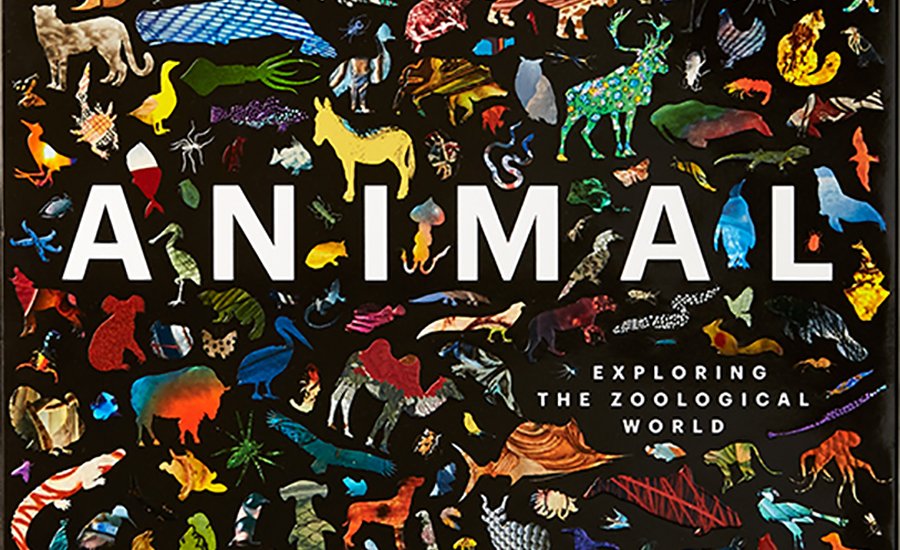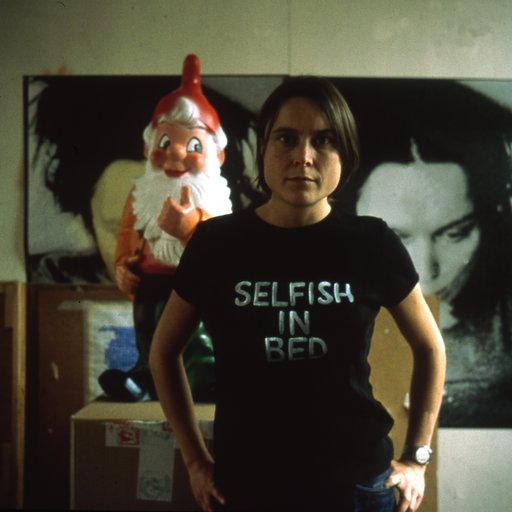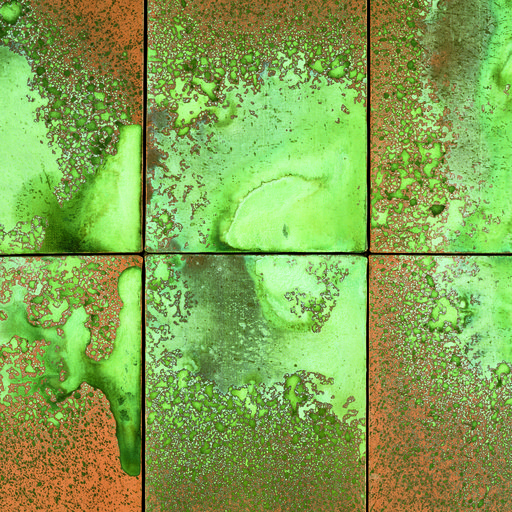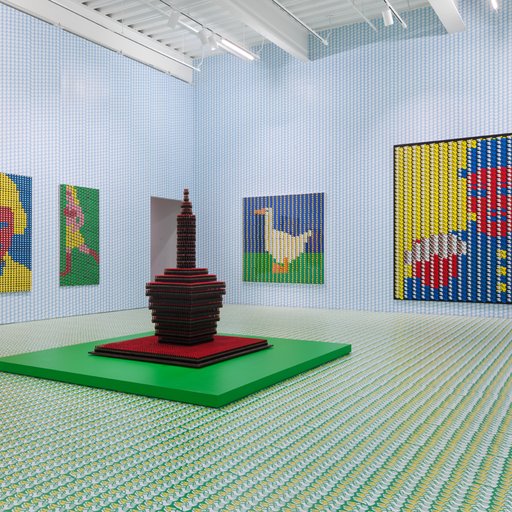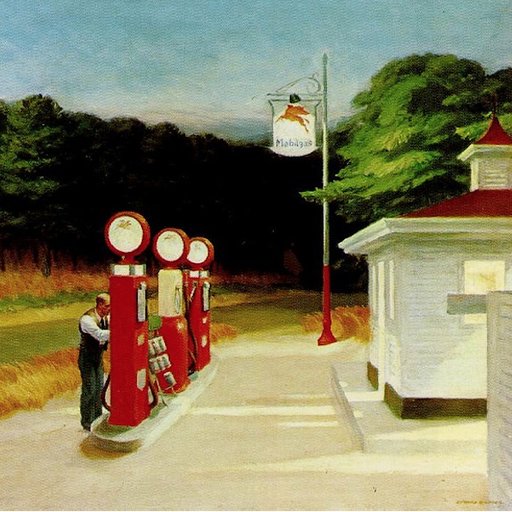The following is excerpted from Phaidon's brand new Animal: Exploring the Zoologial World by James Hanken, a professor of zoology at Harvard University and director of the Harvard Museum of Comparative Zoology.
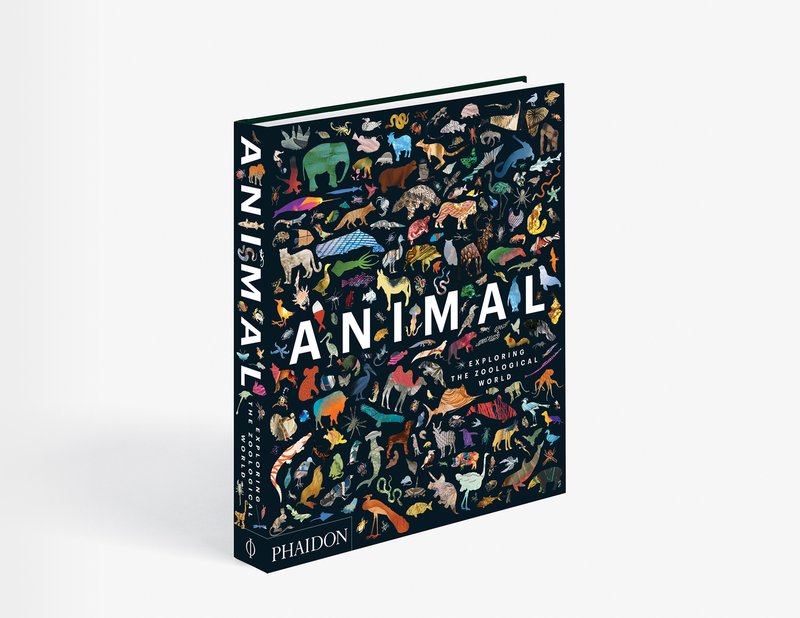 Animal is available on Artspace for $59
Animal is available on Artspace for $59
Most people have a fondness for animals, as pets or sources of beauty and wonder. But humans' relationship with the living creatures we share Earth with is far more complex than that. Animals have provided us with food and clothing. They work for us, protect us and have served us in combat. They inspire myths, legends and fairy tales. Ancient cultures deified them, while throughout time pioneering individuals have tried to unravel their mysteries with scientific study. It is little surprise, then, that for as long as humans have existed, we have made images of animals in all manner of ways: as the first cave art; in sculpture, relief and fresco; on textiles and homewares; in literature and film; and in countless paintings, illustrations, and photographs. The urge to make animal art has attracted many of the greatest civilizations and artists in history, as well as countless other craftsmen who are lesser known, but whose contributions to this rich discipline have been important nonetheless. Animal illustration is also an essential component of zoology, from its origins in the natural history of antiquity and continuing to today's revolutionary technology, producing accurate digital renderings even of animals that became extinct millennia ago.
Animal: Exploring the Zoological World is a remarkable collection of images that span all of human history, from a 30,000-year-old European cave painting to the latest computer-aided visualization of the skeletal movements of a guineafowl. From eighteenth-century Japanese silk paintings to a dancing orangutan from Walt Disney's cartoon The Jungle Book, the collection is a testament both to the power of evolution to generate a breathtaking diversity of biological forms and to the ingenuity of humans to depict these forms in ways that bring them to life as few other kinds of communication can. The juxtaposition of images from different eras, cultures and disciplines—in different media and created for different purposes by a huge range of artists and scientists—reveals remarkable and often unexpected connections.
Here are seven excerpts from the book that explore how artists over time have represented the animal kingdom.
CAI GUO-QIANG
Heritage
, 2013
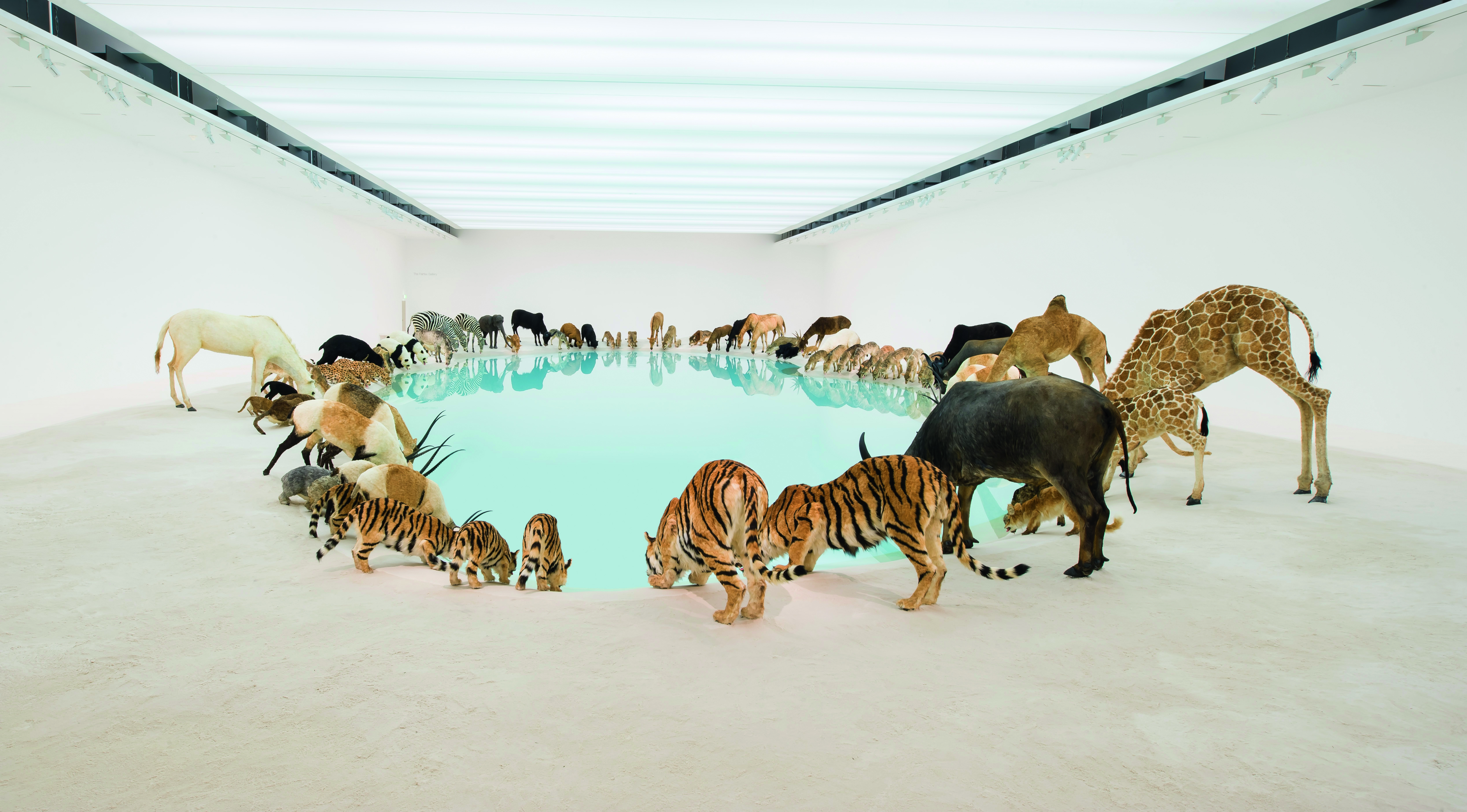
In a scene that could never occur in nature, 99 animals—including a whole tiger family—drink side-by-side from a still blue watering hole in a desert. This typically theatrical and spectacular artowork by the Chinese artist Cai Guo-Qiang (born 1957) is in fact created from faux-taxidermy: the animals are carved from polystyrene and covered in goat hide dyed the appropriate color for each. The installation is an impossible vision recalling those painted by the seventeenth-century Flemish artist Jan Brueghel the Elder, who became famous because of his so-called “paradise paintings,” in which species representatives from across the globe coexist in peace and harmony—an echo of the biblical vision in which the wolf will lie down with the lamb, and the leopard with the goat. But Cai’s contemporary interpretation of the theme is more ambiguous and suggestive of an impending crisis. The dream-like stillness is perturbed only by the sound of water dripping from the ceiling: a reminder of time’s passing and of the inexorable scarcity of resources that threatens the animals that have gathered to drink around what might be the last remaining oasis. The aesthetic of the installation was largely inspired by Cai’s impression of North Stradbroke Island (Minjerribah), off the coast of Queensland in Australia. For him, the pristine natural surroundings were a remarkable exception to the environmental degradation afflicting to the rest of the planet. With its contextual foundations solidly planted in religious subtexts, the poetics underlining Heritage invoke a final prayer for what might be the very end of animal life on this planet.
GUIDO MOCAFICO
Dendroaspis Viridis I
, 2003

These three western green mambas ( Dendroaspis viridis ), their colors ranging from iridescent green to yellow and black on their tails, have seemingly arranged themselves into a regular composition, but are in fact in a clear plastic box. Part of the tropical and subtropical Elapidae family, all of which are highly venomous, these mambas are not particularly aggressive, but they are nervous and therefore often attack when disturbed by humans. The result is frequently fatal. The snakes were photographed by the Italian commercial and advertising photographer Guideo Mocafico (born 1962), who began developing his own projects around the turn of the millennium, including the beautiful documentation of what many of us would see as less appealing animals, particularly venomous spiders and snakes. Mocafico can be seen as working in the tradition of seventeenth-century Flemish still-life painters, who set their objects on tables against dark backgrounds. In that way, the vibrant images of snakes in the Serpens series are faithful to the way we see specimens in museum collections, where the snakes are permanently coiled to fit into jars of preservative, making their markings and color visible to observers. Mocafico himself is terrified of snakes—he says he nearly fainted when he first photographed them—but he claims this element of danger only enhances their beauty. He uses expert snake-handlers to wrangle the snakes into their boxes, before waiting from them to settle themselves into striking arrangements.
CHIM POM
Super Rat,
2006-11

In Tokyo, “super rates” are black rats (Rattus rattus) that have become immune to poison and are plaguing the city. The Japanese art collective Chim|Pom spent an evening chasing them in a Shibuya street frequented by teenagers, where the rats congregate in order to scavenge the discarded remains of the young people’s takeaways. Eventually, the artists captured several animals, which they had taxidermied and painted yellow to resemble the popular character Pikachu from the Pokémon television series. This was in response to the disconcerting sight of a teenage girl dressed as the rodent-like cartoon character walking along the street surrounded by real super rates. For the artists, the urban rats’ ability to adapt and evolve also symbolizes the Japanese people, who themselves have learned to live under all manner of hardships. It is notable—and a testament to how much rats are hated in Tokyo—that the project did not attract criticism on the grounds of animal welfare. Rats cause serious problems in the city, chewing through wires and causing fires, and harassing residents by nesting in homes and roaming the streets. In 2004 the city even held an anti-rat symposium to discus ways of dealing with the problem. Like much of Chim Pom’s work, this irreverent piece addresses a serious social problem and with and humor.
CARL CHUN
Polypus levis, from Die Cephalopoden
, 1910-15

This dramatic illustration of an octopus ( Muusoctopus , formerly Polypus, levis ) was drawn from a specimen collected in the waters near the Kerguelen Islands in the extreme south of the Indian Ocean. This species was first described in 1885 on the British oceanographic research expedition undertaken by HMS Challenger from 1872 to 1876; it inhabits subantarctic waters down to about 400 meters (1,300 feet) and is a predator of brittle stars. The Challenger expedition inspired the German marine biologist Carl Chun (1852-1914), professor of zoology at Leipzig, to persuade the German government to fund an expedition of its own with the aim of studying the marine life and geology of the deep ocean. This expedition duly set out on August 1st, 1989 from Hamburg on the steamer Valdivia with Chun as the overall leader and a distinguished scientific staff, returning to Hamburg the following year. After confirming the position of Bouvet Island deep in the South Atlantic, the expedition made detailed studies of the subantarctic seas and gathered a large collection of botanical and zoological specimens for detailed scientific research. Chun was an expert on cephalopod mollusks—octopuses, squids and their relatives—and he included an account of this group in the results of the expedition, published from 1910.
ARTHUR ANKER
Thalassematid echiuran
, 2013

The colors, textures, translucency and moulded forms in these photographs are suggestive of a glass or resin sculpture, but these are six photographs of the same living animal—a species of spoonworm, whose continually pulsating body never looks the same. They were fished from the seabed off Papua New Guinea by the German zoologist and photographer Arthur Anker (born 1972), an expert at finding little-known animals, especially those living in the ocean, and his photographs reveal both the diversity and the often-ethereal beauty of the overlooked creatures with which we share the planet. Spoonworms are an obscure group of marine animals that tend to be very difficult to find unless you know what you are looking for. They are burrow dewellers that feed by collecting tiny particles of edible matter suspended in the water. The peristaltic movements of the worm’s body drive water through the burrow allowing the animal to collect these morsels. Much of the spoonworm’s biology is bizarre. For example, numerous tiny males, barely visible with the naked eye, live inside each female. This animal—and others like it—have an important lesson to teach about animal diversity: namily, that the appearances and lifestyles of most animals are very alien indeed. To most people, the word “animal” conjures up images of something with fur, feathers, or scales—a vertebrate. Work like Anker’s is an important reminder that vertebrates account for just a tiny sliver—less than five per cent—of animal diversity.
UNKNOWN
Composite Camel with Attendant
, c. 1550-75

On closer inspection, this camel ( Camelus dromedarius ) and its attendant painted by a Persian artist in the sixteenth century proves to be a composite of images placed together to form a kind of collage.There are demons, Sufi mystics known as dervishes, rabbits, dragons and, unusually for Islamic art, embracing couples and even a Buddhist monk at the top of the camel's left front leg. There is a long tradition of novelty composite images such as this in Persian art—and also in Western art, where it was practiced by artists such as Giuseppe Arcimboldo during the Renaissance—but in the later sixteenth century, when this image was probably created in the city of Khorasan in what is now Iran, there was a particular vogue for such paintings. One suggestion is that they have a spiritual meaning: they are depictions of how all wildlife is part of a whole universe under God, an important view of creation in Islamic, Buddhist and Christian theology. With its highly decorated saddle, and its liveried attendant, this camel would have been a status animal belonging to a wealthy or even royal owner. The camel was a vital animal in the deserts of Persia, where it was used for transportation, for trade and warfare and as a farm animal valued for its meat, milk and fur. The animal's renowned ability to survive with little water relies on its storing liquid and energy, in the form of fat, in its hump. Other adaptations for the desert climate include large feet that do not sink in soft sand, and the ability to close its eyes and nostrils against sandstorms.
SAWAKI RIZO MASATOSHI
The Hare with Amber Eyes
, c. 1880

A tiny ivory hare with eyes of amber looks back over its shoulder in this decorative toggle. Netsuke toggles were used extensively from the seventeenth century, particularly during the Edo period (1603-1868) to tie sashes holding sagemonoto (small sacks or boxes) to a kimono belt to allow the wearer to carry possessions in the absence of pockets. As they became more pervasive, they became an important form of artistic expression. Netsuke are made from a variety of materials—often ivory —and can be based upon many subjects, from animals to gods, via erotica. Zoological netsuke often capture a fluidity of movement and anthropomorphized personalities, in addition to miniaturized realism. In Japan, hares are symbolic animals associated with the Moon, which is said to be inhabited by a Moon hare or rabbit. This hare—a katabori , or figural netsuke —is testament to the extreme level of skill sculptors attained. It may be argued that netsuke, if viewed as objects developed through the mechanics of cultural evolution, were initially "selected" for practice use, but were later refined by the rules of "sexual selection," as a bird's feather may have initially developed for its utility, but later became aesthetically striking thanks to the success of generations of more "attractive" colors or patterns. During the nineteenth century, netsuke became extremely fashionable in Europe as collectables. The British ceramicists Edmund de Wall (born 1964) inherited this netsuke, along with 263 others initially given as a gift to his great grandfather. Hidden from the Nazis in occupied Austria, the collection was detailed in De Waal's family memoir, The Hare with the Amber Eyes (2010).











